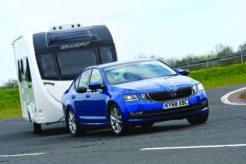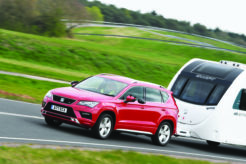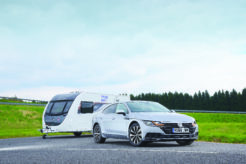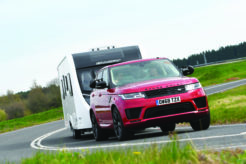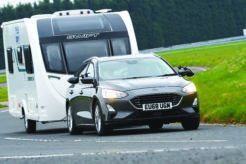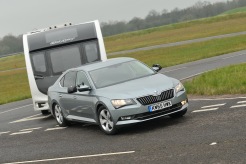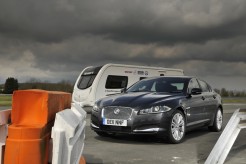There wasn’t a lot that needed fixing, but BMW has improved the X3 anyway. The revisions mean the X3 is an even better tow car.
BMW’s designers have tinkered with the looks here and there, but the most significant change is under the bonnet. The new 2.0-litre diesel engine is a big improvement. It’s quieter and more refined than before, which makes the X3 a better long-distance cruiser. It’s also more powerful. There’s now 187bhp and 295lb ft of torque, enough to pull car and caravan from 30-60mph in 12.7 seconds.
The X3 is stable as well as quick. Even in crosswinds the X3 felt unshakeable, and when slowing from high speeds the caravan’s Al-Ko ATC sensors detected very little movement.
In the lane-change test the BMW X3 bossed the caravan with authority. Even when the tourer started to slide behind the car on the third and fastest run, the caravan pulled it straight again.
With an electronic parking brake, four-wheel drive and plenty of pulling power, the BMW made short work of the hill start test.
In everyday driving, the X3 is sporty or comfortable, depending on what you want it to be, thanks to the optional Variable Damper Control system (£650) fitted to the test car.
It’s roomy as well as fun to drive. There’s decent head and legroom in the back, although unlike the new Land Rover Discovery Sport, the BMW has five seats rather than seven.
However, the X3 loses a few points from our practicality judges as there wasn’t quite enough boot space for every item in our typical load of holiday luggage.
The BMW may not be cheap to buy, but What Car?’s experts predict it will hold its value well.






